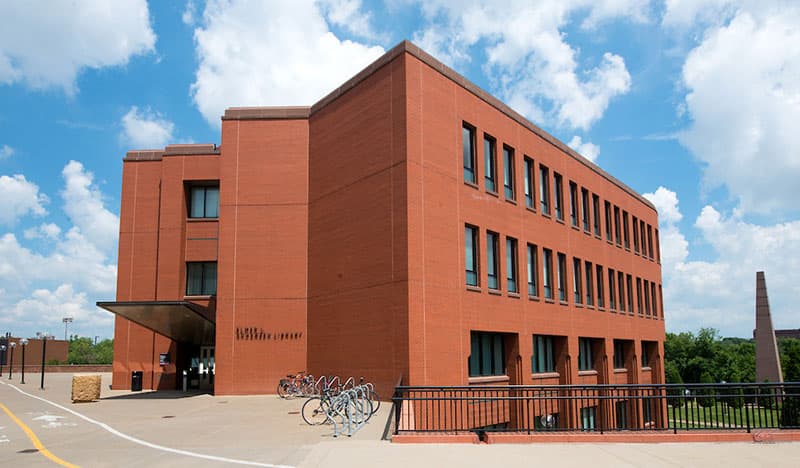Pandemic and Epidemic Resources Found in the IHRCA
ADAM MATTHEW DIGITAL: MIGRATION TO NEW WORLDS
This database is limited to university affiliates.
To access the database:
- At UMN, log in and then use https://libguides.umn.edu/19834; keyword search for terms such as “epidemic”, “flu,” “influenza” AND use Library/Archive filter “Immigration History Research Center Archives.” There are hundreds of results to explore. Originals of these sources can be accessed in the Archives in the future; or contact Archives staff for a digital copy.
Sample of what you can find in Migration to New Worlds:
- Minnesota Finnish American Family History Project, c.1860-1985. Interview with Arnold Ahonen (Chisholm, MN) [Part 3], 1981: “Well then another thing about during World War I, the flu epidemic hit this area and many people in Chisholm were affected. In fact, our family was affected by the flu. Olga, which is the one that was brought up by my mother, my mother's sister's daughter, was living with us. So she came down with the flu, and as soon as that happened we were quarantined. They used to have a quarantine hospital on the edge of town, but that thing was so filled that they would quarantine the homes. And dad would happen to be go down for work and the medical officers came and the policeman, and they quarantined the house so nobody could get inside our apartment. And the policeman would sit outside to make sure nobody went in. Dad was downstairs, and we were upstairs, and he couldn't get up. So to make sure we got the materials we needed, we made a bucket brigade by taking a clothes line and lowering the bucket through the window. And dad would get the bucket from the outside and fill it up with groceries and things that we needed.” [CHUCKLES]. IHRC1560.
COLLECTIONS
Anthony Grebenc papers. Box 1, folder 3. Chapter 12, “Disease and Injuries” relates childhood experiences with influenza and diphtheria epidemics, including wearing masks. (Also in Migration to New Worlds.) IHRC807.
Immigration and Refugee Services of America records. Press Releases, 1936 [Folder 2]. Box 43. A report from 1936 contains information on Dr. Hirose’s vaccine research in infantile paralysis. (Also in Migration to New Worlds.) IHRC1013.
Immigration and Refugee Services of America records. Puerto Ricans – Reports, Articles, Bulletins. Box 36, Folder 14. A 1930 document outlines epidemic and health conditions on the island; other documents in the folder provide context. (Also in Migration to New Worlds.) IHRC1013.
Immigration and Refugee Services of America records. Press Releases, Jan-Jun, 1953. Box 126, folder 3. A 1953 Common Council Press Release provides summary of anti-tuberculosis international work. (Also in Migration to New Worlds.) IHRC1013.
Immigration and Refugee Services of America records. Deportation – Bulletins, Correspondence, Legal Materials, etc. Box 35, folder 20. The document titled “Deportation of Aliens; A Brief History of Laws and Procedures” dated 1933 provides directions on deporting based on health, and 5 years of statistics on the number of people deported due to tuberculosis or other disease. (Also in Migration to New Worlds.) IHRC1013.
Vienna (Saari) Maki papers. Maki described life in a small town in Minnesota and life on the farm. She talked of the aid from neighbors. A distribution center was set up for people stricken with the flu. (Also in Migration to New Worlds.) IHRC1436.
Minnesota Finnish American Family History Project, c.1860-1985, Interview with Mrs. Inez (Oscar) Jaakkola (Brainerd MN) [Part 2]. Discusses the severity of the flu epidemic, c. 1918, likely in Brainerd, MN. (Also in Migration to New Worlds.) IHRC1560.
Grace Billotti Spinelli papers. See autobiography titled “Roots and Wings.”
A summary notes that “Sicilians tended to distrust any type of government. They believed the cholera epidemic of 1910 and the flu epidemic in 1918 were caused by the government…." (Also in Migration to New Worlds.) IHRC2483.
Telegraph Hill Dwellers Oral Histories Collection. Virginia and Elios Anderlini Interview, Box 1. It draws on the experiences of the couple as long-term residents of San Francisco, their Italian heritage, their family and early life in the US. (Also in Migration to New Worlds and online via https://www.thd.org/oral-history.) IHRC3412.
Trieste State Archives records consist of consular reports, correspondence, emigration statistics, statistics on return migration, shipping information, records of epidemics and diseases, and information on transportation to and conditions in countries to which Austro-Hungarians emigrated. Mainly in German and Italian.
Union and League of Romanian Societies in America, Inc. records. A ledger lists members of the Union who refused to repay the Union for funds disbursed during an epidemic of influenza., 1919. Also, see Register of Spanish Flu Cases, 1918-1919. Mainly in Romanian.
There are references to disease within Immigrant Stories (video digital stories). See for example
John Andreozzi (regarding the flu): https://immigrants.mndigital.org/items/show/484 and
Vincenza Pusateri (tuberculosis): https://immigrants.mndigital.org/items/show/722
Re. later-20th century health issues, there are reference articles and articles on tuberculosis, measles, opium, and AIDS in the Refugee Studies Center records. IHRC2968.
BOOKS
Kraut, A. (1994). Silent travelers : Germs, genes, and the "immigrant menace". New York, NY: BasicBooks.
Markel, H. (1997). Quarantine : East European Jewish immigrants and the New York City epidemics of 1892. Baltimore, Md.: Johns Hopkins University Press.
Contact Us
To specifically contact the IHRCA, please:
- Email: ihrca@umn.edu
- Phone: 612-625-4800
